Few vegetables combine flavor, nutrition, versatility and beauty like winter squash and pumpkins. I love them for all of those reasons, and would grow them every year, but for squash bugs.
Basic strategy for evading pests
I’ve found that crop rotation within my 30 x 50 foot garden is not enough to evade squash bugs. They over winter in the garden and quickly find next spring’s plants even if they are located in the opposite end of the garden. I don’t like hand picking or chemical control, so I’ve found another solution: growing these plants in alternate years.
Now that I grow winter squash and pumpkins every other year, squash bugs are a non issue. During a squash/pumpkin year in my garden, squash bugs begin to proliferate, but not enough to do significant damage. Those that overwinter in the garden find no suitable host plants the following summer, because I never plant them in consecutive years. So during a non-squash year in my garden, the bugs that have spent the winter either die out or leave. None of them survive (or stick around) to spend the following winter in my garden. The next spring, I set out my squash and pumpkin plants, and there is no in situ squash bug population ready to attack. Instead, they have to migrate in from other gardens, and that takes a while. By the time they find my plants, it’s too late for them to have a substantial impact.
So that’s how we do it here. I realize that if I hand picked or treated the bugs, I could have an annual squash and pumpkin harvest, but I don’t want to spend the time on that, nor pollute the environment.
And it works out well that we have the exact same scenario with potatoes. Potato beetles become an overwhelming problem if I grow potatoes annually. So to evade both squash bugs and potato beetles, and I alternate years with potatoes and squash/pumpkins. It’s kind of nice that they are both starchy vegetables. This year is a squash year, so our starchy side dish is often squash. Next year will be a potato year, and we’ll eat a lot more potatoes than squash.
Of course it would be nice to grow both squash and potatoes every year, but I kind of like adapting to the environment once in awhile, rather than engaging in constant battle. That sometimes means forgoing resources that must be obtained at higher environmental cost, in favor of those that I can produce with low impact, or that exist in abundance at my fingertips. It’s a good lesson to teach my kids, too, and the squash/potato alternation and bug evasion is a nice concrete example for them to understand.
Choosing varieties
The fun thing about growing squash and pumpkins is that there are many beautiful and delicious varieties. I rarely grow field pumpkins because they take up a lot of space and don’t make good eating. They are beautiful, but I am fortunate enough to live down the road from a larger farm, where brilliantly colored maples and rolling hills frame a gorgeous pumpkin patch and cornfield.
I get to enjoy this stunning harvest symbol and lovely autumn landscape without any toil on my part.
I often grow small sugar pumpkins and several varieties of winter squash, partly because some are better suited to certain uses than others, but also because they are all so beautiful that I cannot decide on one variety. Some need to be cured, and some don’t. Some endure months of storage in the basement, and others must be used soon after harvest.
Acorn and delicata do not need to be cured, but do not last more than a couple of months after harvest. Buttercup, butternut, hubbard, and kabocha need to be cured but last (with proper storage) for at least several months. Red kuri is a nice one, because it does not need to be cured, and lasts at least several months. Butternut lasts longest in storage. All of this is summarized on this very helpful chart from Johnny’s Seeds.
This year I grew 1 or 2 vines each of acorn, delicata, kabocha, butternut, and buttercup. We just finished eating our acorn and delicata squashes, and will move on to the others, leaving the long storing butternut for last. Check out Johnny’s Seeds, my favorite seed company, for their tremendous variety of squashes and pumpkins.
Cooking with pumpkin and winter squash
The possibilities are endless. Mashed, glazed and roasted; pureed for soups, breads, muffins, pies, and, of course, for ice cream
Shared on:











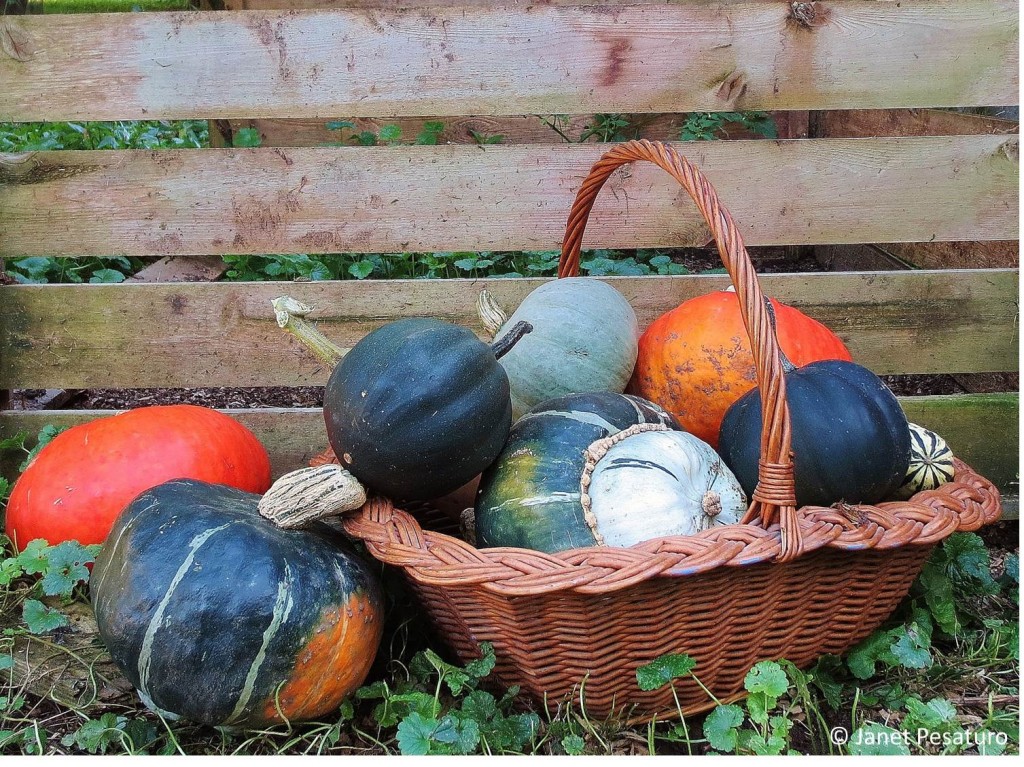
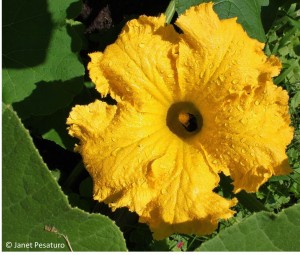
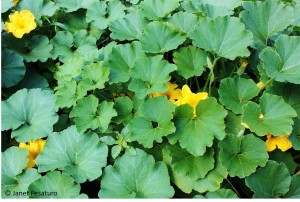
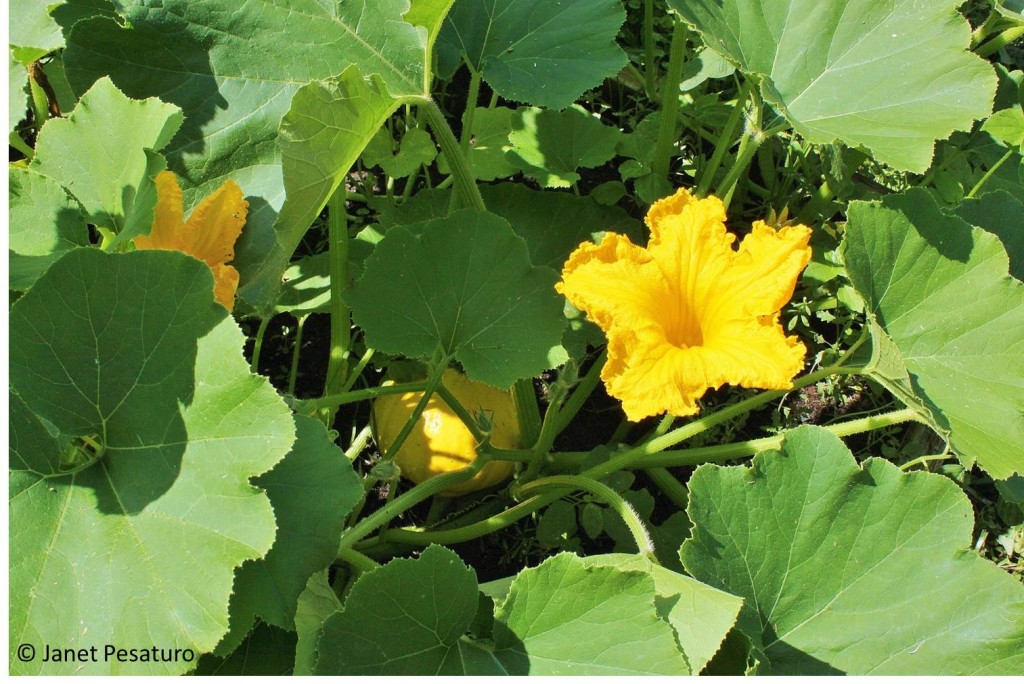
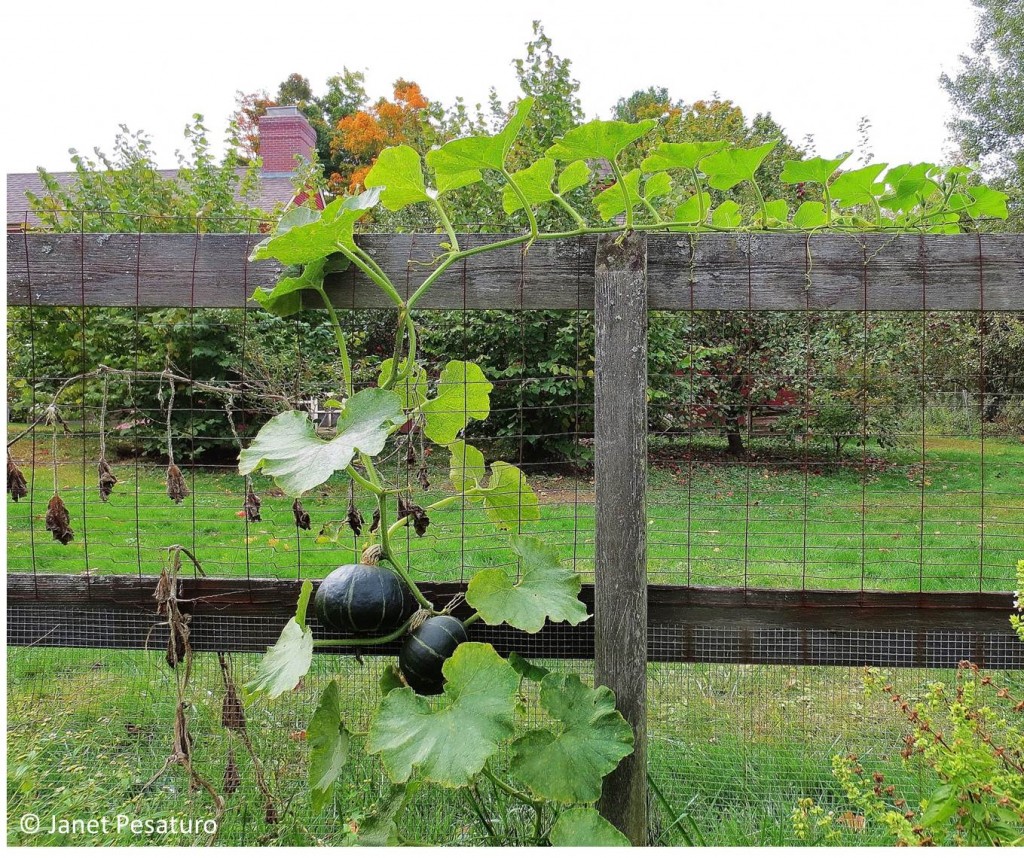
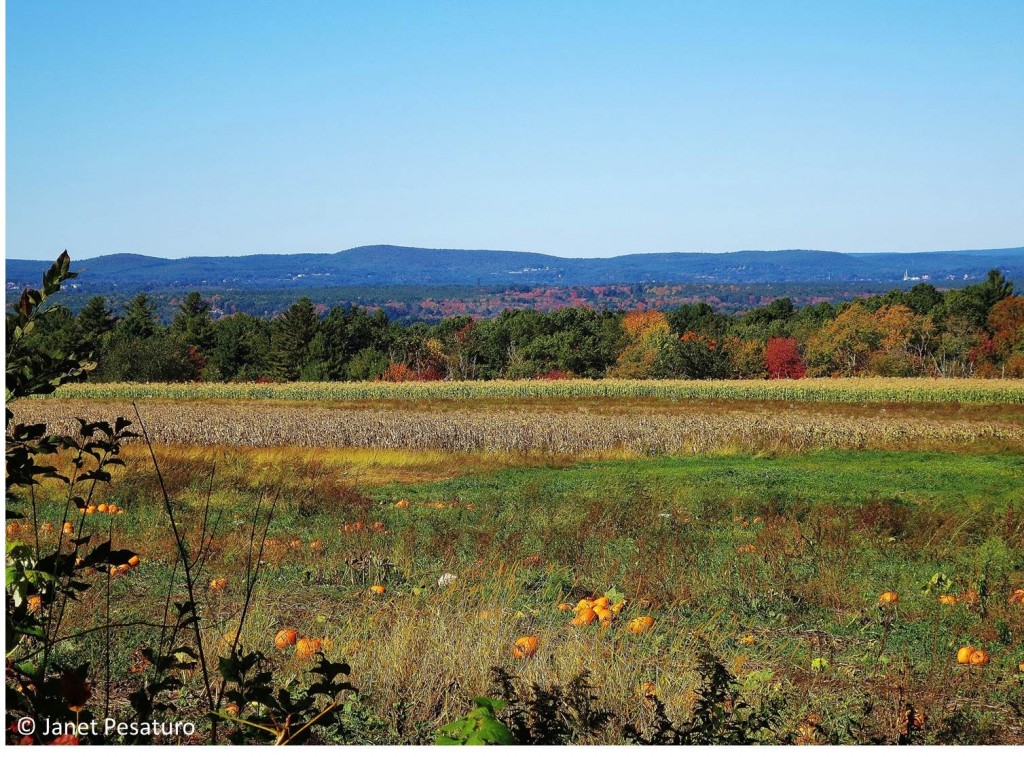
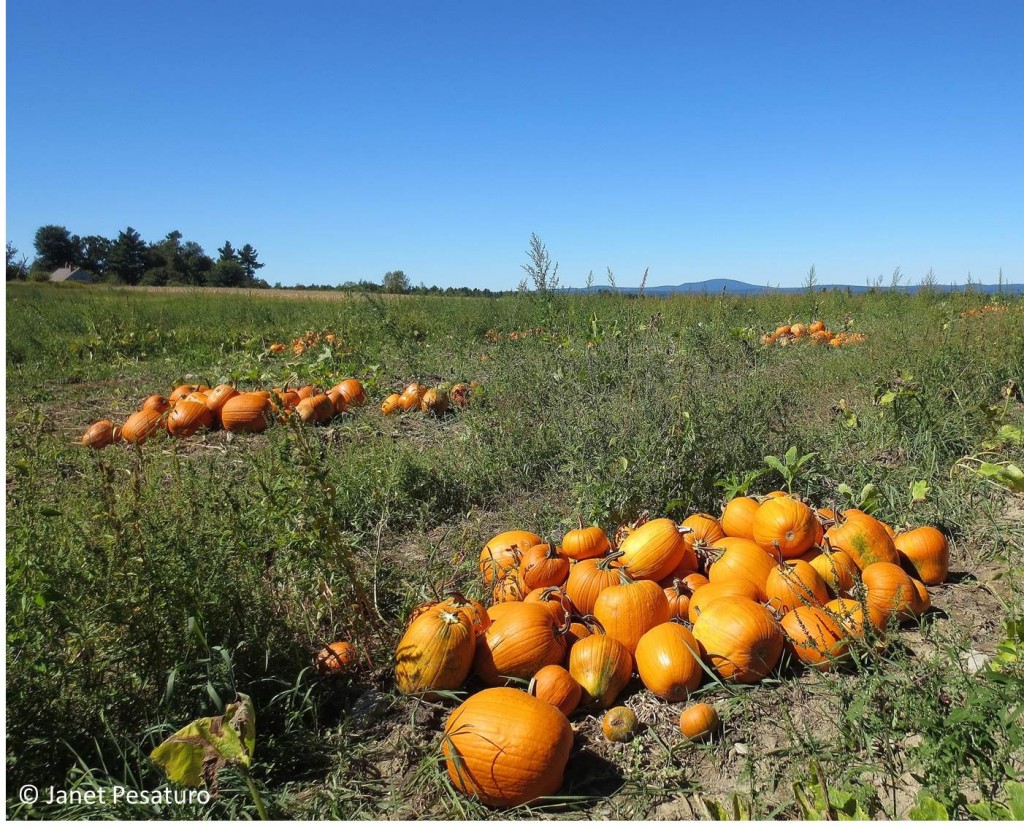
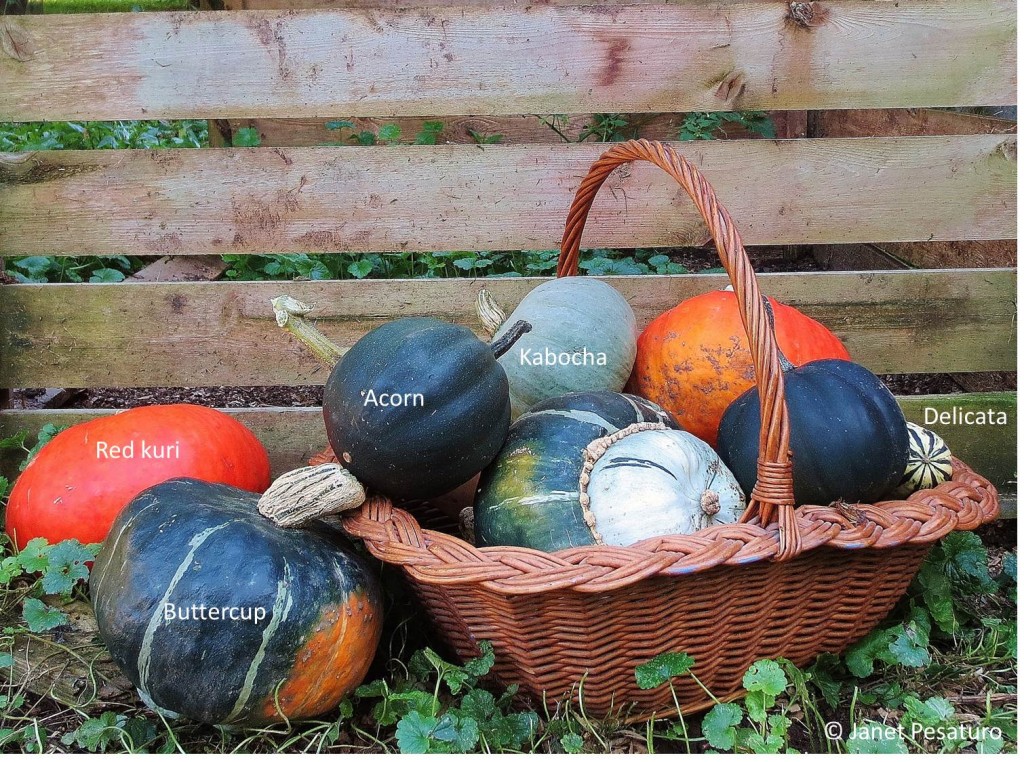
Pingback: Pumpkin ice cream sandwiches with gingersnaps - One Acre Farm
After reading your squash crop rotation post, I’m pretty sure I’ll be roasting one in the very near future ! Thanks Janet.
Oh, good, if it inspired you, that makes me happy!
Your squash are gorgeous! I grew Red Kuri this year too and they are tasty. But I think next year I will plant the Buttercup again…my all time favorite!
Thanks, Lisa. Both great varieties, with sweet, rich flesh. I’m making a pie out of a buttercup today!
What great idea to rotate by year your squashes and potatoes! btw…yum…love delicata…looking forward to your potato choices for next season!
Thanks, Bobbye!
This is wonderful and so informative. Maybe I will get brave and try this myself. I’m always interested in non-pesticide methods.
blessings,
Shan
The How to Guru
My squash and cucumbers have very few female buds (2 on 6 plants) and a lot of male flowers. Is their any thing I can do to increase my yield ? I am growing them in a green house. Also what is the best way to pollinate them.
Did you get my request for inforation on pollinating my squash?
Hi Marvin, I have never hand pollinated my squash, so I had to look this up. I did find a very informative article on it, though. I hope it helps:
http://www.pumpkinnook.com/howto/pollen.htm
I have never heard of “curing” a squash. How is that done?
Hi Anita. It’s really easy. Remove the ripe squash/pumpkins from the vines, and leave them in the sun for 1-2 weeks, depending on how sunny and dry the weather is. Then turn them over, and let them sunbathe for another 1-2 weeks. If it’s rainy in your area at harvesting time, this would be better done in a greenhouse, but here it tends to be sunny and dry in early fall, when our squashes are ready for curing. It’s definitely worth it to cure them, because it brightens the color, sweetens the flesh, and thickens the skin so they look better, taste better, and store longer.
Thank you! That sounds easy enough. I am in an area east of San Diego, CA so I should be able to do that! I’ve learned several things from your blog today. I appreciate the help.
I haven’t had much luck with pumpkins in the garden, so this year going to plant them in the pasture. Have had horses and goats here so it is good and fertilized just have to haul water over in five gallon buckets. It would be worth it if I could get some pumpkins. Ellen from Georgia
Sounds like a good plan, Ellen. Pumpkins also like a lot of sunlight, which they should get plenty of, in a pasture. Good luck!
This is great advice! I love picturing those bugs wandering around hoping for squash and finding nothing. My issue is more with squash vine borers, as well as the fact that many people garden in my neighborhood. Still, I think this will be worth a try, thanks for the helpful advice!
You are very welcome, Jon. Let me know how it works out. I think it depends somewhat on how close the neighbors’ gardens are. There is a farm that grows a large pumpkin patch every year, just up the road from us, and still it helps tremendously to grow them in our yard only on alternate years. It seems to take those little buggers awhile to find a new garden.
Good Info, do have any solutions for Flea Beetle?
Nope. Sorry, I haven’t had to deal with them.
Something started growing out of my compost. And kep on growing. And kept on growing. Huge leaves, many branches, and then yellow squash flowers. And keeps on growing and producing more and more butternut shaped squashes, some fifteen inches long, some rounded like some completely different squash.
One question: When to harvest. The greenery seems too lush for them to cure where they are.
Pingback: Squash and pumpkins in the home garden